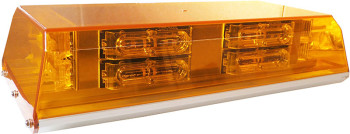EMS Lighting Trends
Lighting can change a lot over the course of just a few years. You might be surprised to learn that emergency lighting is currently going through several major overhauls as better ways to provide emergency lighting are developed. The following are three of the current trends in EMS lighting to look out for.
1. LEDs
LEDs are the biggest, most pronounced trend. A very large percentage of EMS forces are moving toward models that utilize LEDs wherever possible. LEDs constitute a higher initial cost, but come with a variety of benefits. LEDs are much more energy-efficient with longer lives than traditional bulbs. Where a traditional bulb has a lifespan of 1,000 to 1,500 hours, LEDs tend to exceed 40,000 on a very conservative estimate. LEDs are also much more durable. LED lamps can shrug off inclement conditions like extreme cold and humidity with much greater ease, making them easier to develop into EMS-appropriate fixtures.
On top of all this, LEDs are much brighter for the wattage consumed. On the low end, LEDs are approximately 10 times more efficient than incandescent bulbs. This advantage falls off at the high end of the lumen scale, but high-output LEDs are still approximately five times more efficient than an equivalent incandescent bulb. This makes them ideal for extended use.
2. Digital Control Systems
More EMS lighting is coming with a digital interface for control purposes. These are not strictly new, but the increased efficacy of modern electronics is making them an increasingly better idea. Many EMS lights still operate on a functional on-off basis. Using a digital control system for your EMS lighting allows you to use your lights for different kinds of signals, to increase or decrease output as you require, and even to log usage to more easily regulate battery output and power use. Digital control systems tend to be most compatible with LED lighting systems, and the two are often installed hand-in-hand.
3. Dual Reflectors
Dual reflectors let you get more for less with your EMS lighting. There are a few variations of dual reflector technology on the market right now, several of which are patent pending. Dual reflectors are very effective for two reasons: they save on wasted energy like traditional reflectors, and they are more effective at focusing the light where it needs to go. Dual reflector technology in perimeter lights and light bars will keep the light aimed where people will be able to see it, tightening the light into a cone instead of an open hemisphere. Coupled with other tools to reduce the necessary wattage, this is a major improvement for the purposes of lifespan, effectiveness and efficiency.
EMS lighting might be changing more than you think. Look into what EMS units outside your local area are up to. You might be surprised what they’re investing in, and you may be pleasantly surprised to find it’s within your budget. These three things are trends not just because they’re better, but also because they’re growing increasingly less expensive over time.

